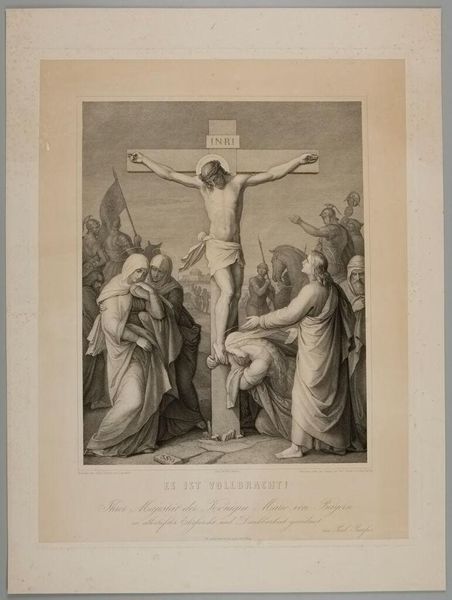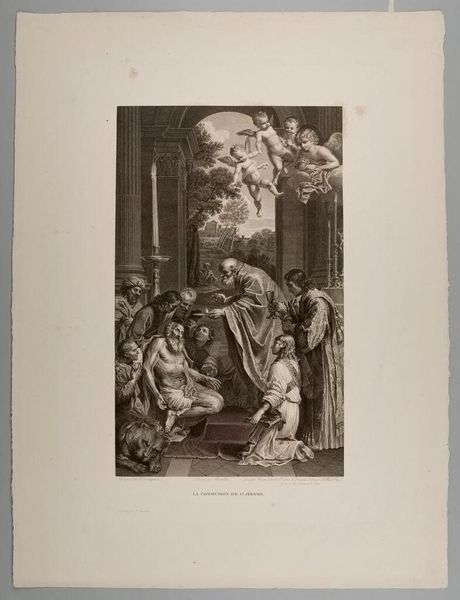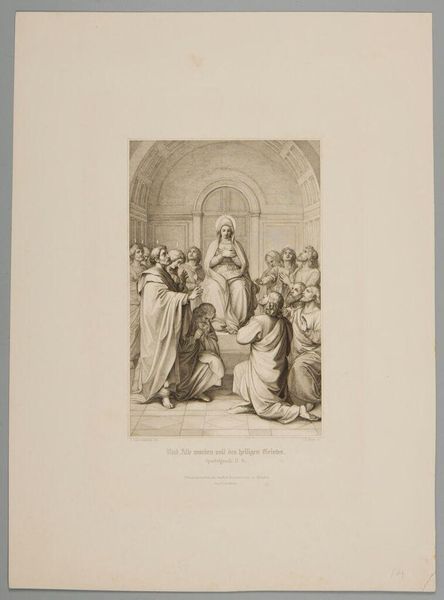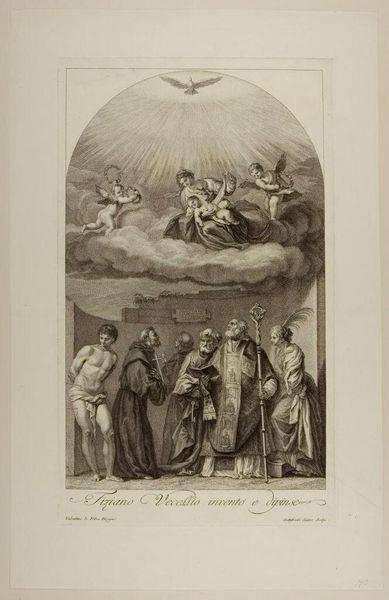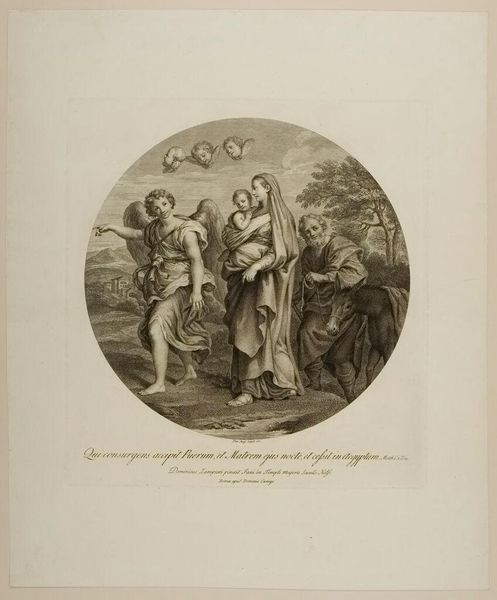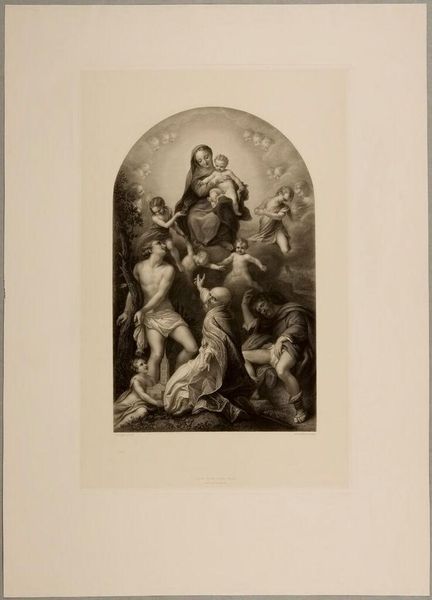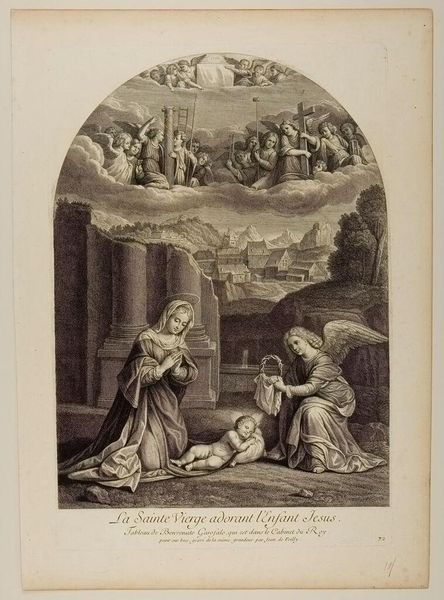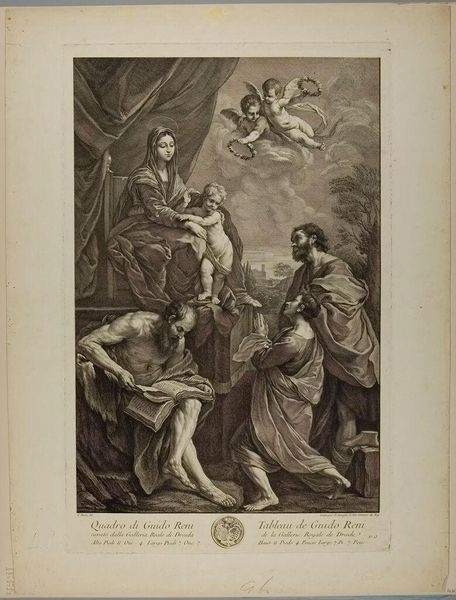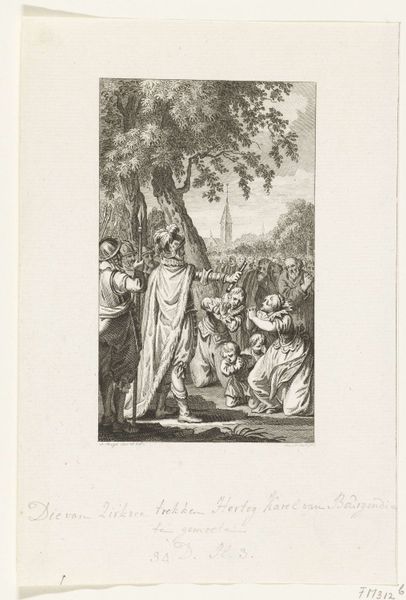
Copyright: CC0 1.0
Curator: Ah, yes, looking at Joseph Leudner’s "Crucifixion," I'm immediately struck by the sheer weight of grief. It's as if the air itself is heavy with sorrow. Editor: What interests me is how the printmaking process, likely etching or engraving, allows for this incredible detail while also suggesting mass production and accessibility. Religious art for the people? Curator: Indeed! The fine lines almost feel like whispered prayers. To me, it's less about mass production and more about capturing a profound moment of spiritual reckoning. Leudner, who died so young, really poured his soul into this. Editor: But isn't that "spiritual reckoning" also a product of very material conditions? The church’s influence, the demand for such images, the availability of printmaking materials – all of it shaped the piece. Curator: Perhaps. I see it more as a testament to the human capacity for empathy. The composition guides you, drawing your eye to the suffering figure, but also to the mourners at the base of the cross, each lost in their private anguish. Editor: And let’s not forget the craftsmanship itself, the labor involved in meticulously creating this matrix. Each line is a testament to the artist’s skill, a physical manifestation of devotion. Curator: Well, whatever the origin, it undeniably leaves a lasting imprint, even centuries later. Editor: Absolutely, it’s a potent reminder of how interconnected the sacred and the secular truly are.
Comments
No comments
Be the first to comment and join the conversation on the ultimate creative platform.

